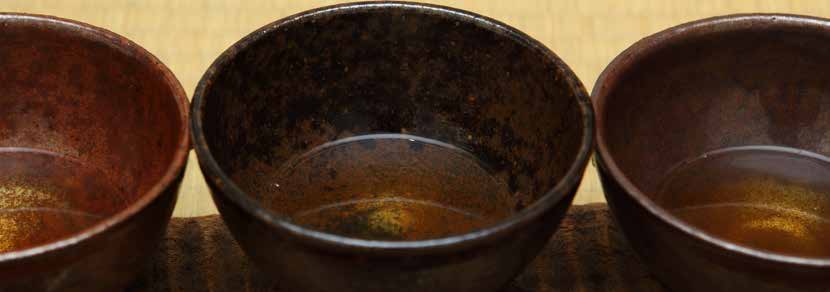
 |
|

In October, the Korean monk clacked the bamboo three times, signifying the beginning of the tea session. He carefully poured us some Red Tea he had made by hand, using a rustic pot and five little cups. The awe-inspiring pot had an actual tree attached to the button on the lid, suggesting a bonsai bereft of its leaves, seeking winter's embrace. Each of us took a cup from the basket he handed around. When we all held our cup, he looked at us with a warm smile and with the utmost sincerity exclaimed, "Autumn has now arrived!"
That was at a tea gathering in Tainan this month, where tea lovers from all over Asia meet every year to discuss Oolong tea. It is a good chance to see good friends from afar, like the Korean master who served us tea this year. Since many of the topics at the forums and seminars are also about tea history, folklore, processing and appreciation, we also feel responsible to show up and speak for Tea herself, and for Mother Earth: reminding everyone that without any Tea there is no tea culture to speak of. Tainan is much hotter than Miao Li. The southern part of the island is in the tropics, and is also much flatter. Upon returning home, an autumn chill had set in and the breeze reminded us of what the Korean master had said.
Tea really does mark the seasons, especially for a tea lover. Spring officially began in ancient China when the emperor sipped the first cup of the first flush of that year's Green Tea. And even today, tea lovers shift their tea drinking to suit the seasons. We find ourselves inviting our adolescent Puerh, and more and more turning to gongfu tea in the autumn - perhaps our bodies yearn for smaller, more refined amounts of tea. As a result, we also tend to brew more Oolongs at this time of year, especially Wuyi Yancha and Phoenix Mt. Dancong teas. Despite the trend, there are still a few young Puerh teas that we brew nowadays, as you will see when you open this month's tea, but they grow fewer and farther between.
In October, we enter the ninth Chrysanthemum Moon. The ninth day of the ninth moon is an important day to pay respects to our elders. Nine is an important number in the I Ching, and in Chinese it is also a homophone for the word "forever" - so doubling the nine is like doubling forever. This day signifies longevity, and a festival on this day dates back to the third century BCE. Traditionally, people drink Chrysanthemum wine or tea and pay respect to their oldest living relative. They also wear dogwood leaves to dispel misfortune. This day might also include a trip to the temple to pray for longevity themselves. Many Chinese people go hiking on this day, appreciate the chrysanthemums and eat rice cakes, often reciting poetry that was written for the holiday.
One story of this holiday's origin is about a legendary figure named Huan Jing. His parents died of the plague, so he traveled to Zhong Nan Shan to learn medicine and save others. While there, a Daoist immortal took pity on him and gave him a blue dragon sword that could dispel demons. The immortal said another plague demon would arrive on the ninth day of the ninth moon and urged him to gather the people of his village on a hill outside town, luring them with the promise of chrysanthemum wine. Huan Jing took the villagers outside town and gave them dogwood to protect them, though he himself stayed behind to combat the demon. He slayed the demon with his magic sword and was immediately a hero worth celebrating, then to now...
Light mists; thick clouds melancholy all day. The burning incense dissolves in the gold censer. It's the good time of double yang. Jade pillow, silk curtains, the furniture - all are pierced by the midnight cold. After drinking [tea] at the eastern hedge during the yellow dusk, some hidden fragrance overflows my sleeves. There is no way that does not dissolve the soul. The curtain swirls in the west wind: I'm wasting like the yellow flowers.